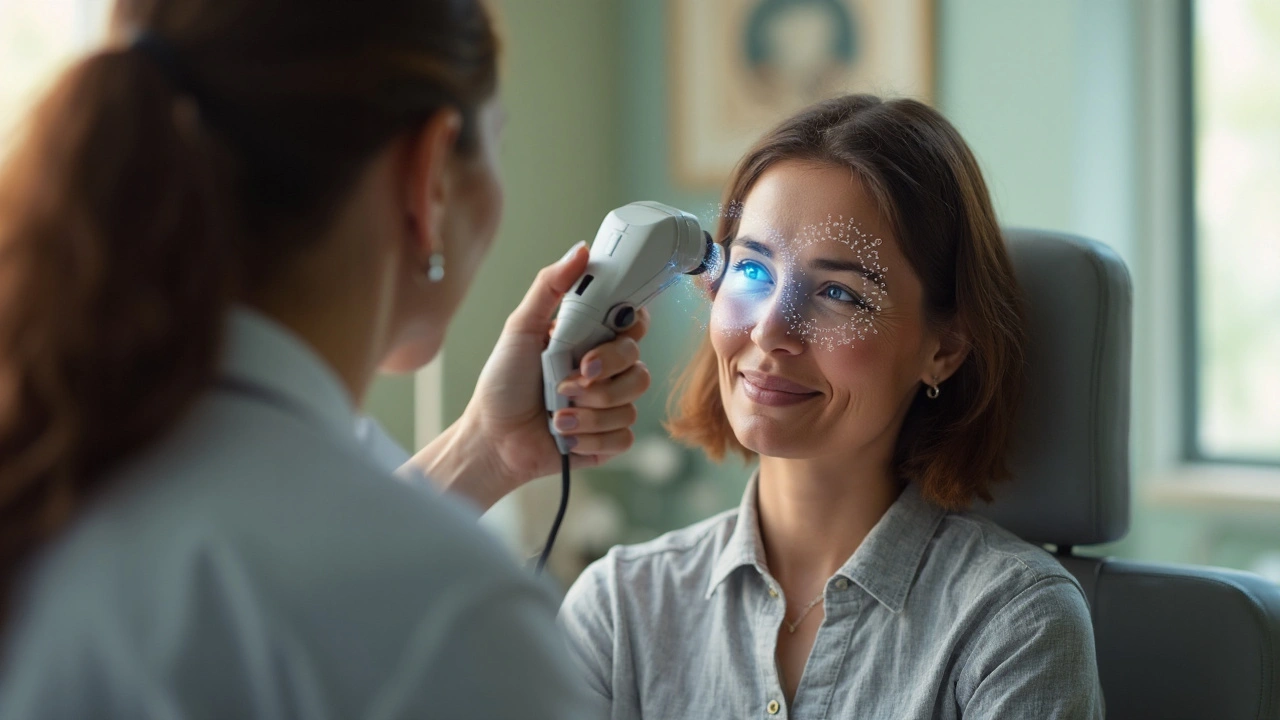Diabetic Retinopathy – Everything You Need to Know
When dealing with diabetic retinopathy, a diabetes‑related eye disease that damages the retina’s tiny blood vessels. Also known as DR, it can lead to vision loss if not caught early. This condition is a direct complication of diabetes, a chronic disorder that raises blood‑sugar levels and strains blood‑vessel walls. Because the retina relies on a steady supply of oxygen and nutrients, the high‑sugar environment triggers microvascular leakage, swelling, and new, fragile vessel growth. Those new vessels are the target of laser therapy, a precise treatment that seals leaking vessels and prevents further bleeding, while anti‑VEGF injections, medicines that block the growth‑factor driving abnormal vessel formation aim to reduce swelling and preserve sight. In short, diabetic retinopathy pulls together blood‑sugar control, eye examination, and targeted interventions to keep the retina functioning.
Understanding the risk profile helps you catch DR before it hurts your vision. Poor blood‑glucose control, high blood pressure, and elevated cholesterol each act as separate stressors that worsen retinal damage. Think of the retina as a delicate canvas; when glucose spikes, it stains the picture with micro‑aneurysms, while hypertension adds pressure that stretches the canvas, making tears more likely. Regular comprehensive eye exams become the safety net, because early stages—often called non‑proliferative diabetic retinopathy—show up as tiny dark spots or mild blurriness that many patients ignore. Once the disease advances to the proliferative stage, those fragile new vessels can bleed into the vitreous humor, causing sudden flashes or floaters. Managing the underlying diabetes, keeping blood pressure below 140/90 mmHg, and maintaining a healthy lipid profile are proven actions that curb progression. Studies from leading eye clinics show that patients who keep HbA1c under 7% reduce the risk of severe DR by nearly 50% compared to those with uncontrolled levels.
When DR is detected, a step‑by‑step treatment plan can protect your sight. First, tighten sugar control with diet, exercise, and appropriate medications—often a mix of metformin, SGLT2 inhibitors, or insulin, depending on individual needs. Next, schedule retinal imaging (OCT or fluorescein angiography) to map the damage. If macular edema is present, anti‑VEGF injections such as ranibizumab or aflibercept are administered monthly for the first three months, then spaced based on response. For widespread retinal bleeding, scattered laser photocoagulation seals the leaking spots, while pan‑retinal laser therapy tackles proliferative disease. In some cases, vitrectomy surgery removes blood and scar tissue from the eye’s interior, restoring clarity. Lifestyle tweaks—like quitting smoking, controlling blood pressure, and eating a diet rich in leafy greens and omega‑3 fatty acids—support the medical regimen and improve overall eye health. By staying proactive and partnering with an ophthalmologist, you turn a potentially blinding condition into a manageable part of your diabetes journey. Below, you’ll find detailed articles that dive into diabetes meds, eye‑care tips, and the latest advances in DR treatment, giving you a well‑rounded toolbox for protecting your vision.
Protect Your Vision: Diabetes Type 2 and Eye Health Guide
Learn how type 2 diabetes affects your eyes, recognize early warning signs, and follow practical steps to protect your vision with screenings, lifestyle tweaks, and treatment options.

